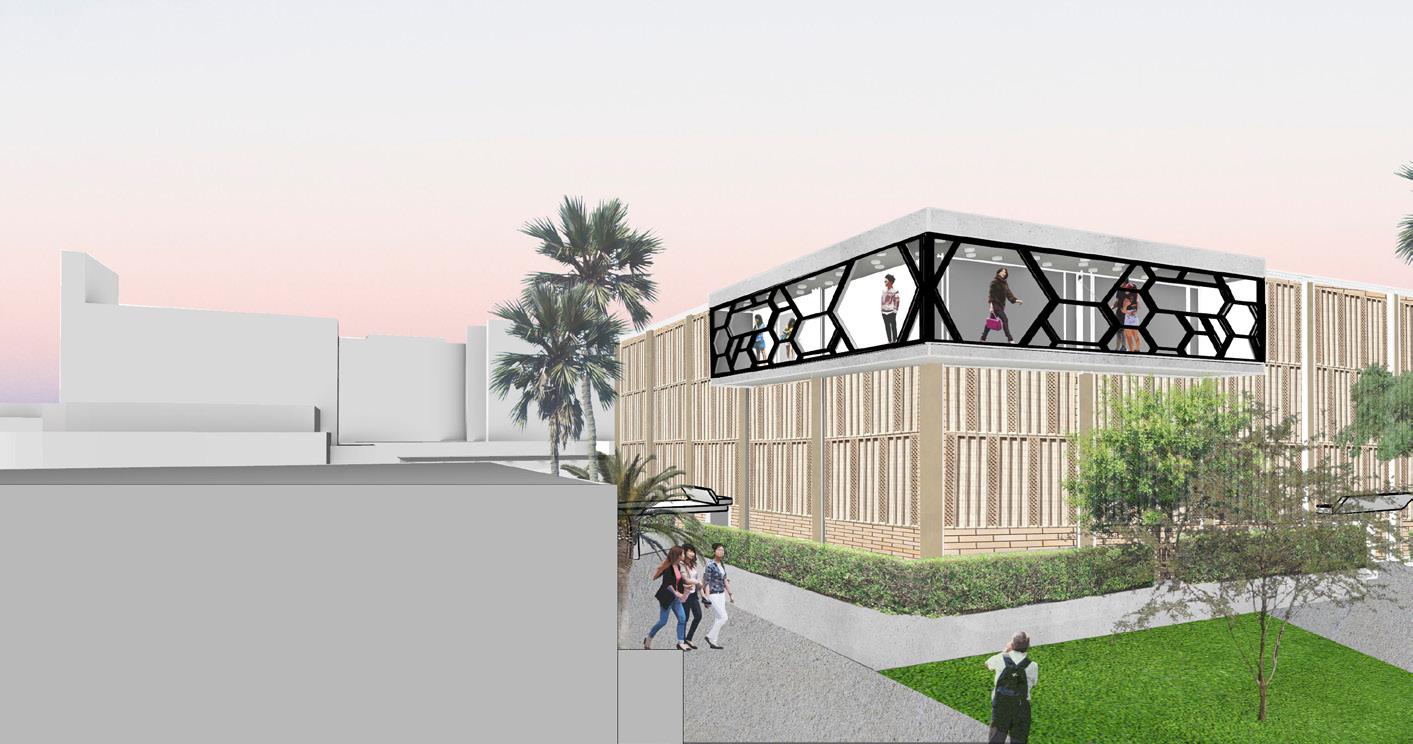
3 minute read
Ashley Ontiveros
Ashley Ontiveros The Graft and Host
S.H. Walkway was a project like no other. Within the context of a pandemic, it brought me back to connect with architecture and, at the same time, helped me understand the network that happens between architecture within the social, political, environmental, and economic contexts. I was assigned to design a place for study onto an existing ASU building: The Farmer Education Building. So, I called this project S.H. Walkway as a mirror of the acronyms for H.B. Farmer Education Building.
At first, I didn’t understand how this project would help me see the connection between architecture and the various contexts in which it embedded itself. It wasn’t easy to start seeing all of these connections that I had to make for this project without relating to it myself. I could only become more deeply connected to the Farmer Education building before I could make any other connection. I started thinking to myself how a floating idea had to become grounded into the reality of an existing ASU building. There was a physical connection that I had to build from here to there. The fact that the site, the people, and the environment were already chosen for me intensified the need to bridge architecture to another. I wasn’t sure yet how to go about this bridge, so I visited the site. It had been a long time since I last visited the ASU campus. As soon as I stepped in front of the Farmer Education Building, memories and emotions spilled left and right. I realized that there was already an unspoken connection I had forgotten: this was where all of the connections started.
My overall experience while designing this project is a connection itself that happened subconsciously. I had met different obstacles, trying to shape my design to the contexts of the social environment and others. I constantly reminded myself that my space reflected the students already moving through the Farmer Building. I needed to keep these relationships in mind throughout the project because the design couldn’t sit alone. It had to connect with the Farmer Education Building in more than one way. I started sketching one idea after another on my tracing pad. Each iteration had a close mark to the last one, and it kept happening, sketch after sketch. Each time my heart pounded louder because I felt drawing one connection closer to the next. Then, I realized that my final decision for a design would encompass the whole nature of a connection. My project had to embody connection. How so?

In trying to embed an architecture to the social context of students who brought a space of study come alive, the political orientation to maintain a place with that purpose, and the environment being an enclosed yet free space, my project had to bring all of this together into one project. It would be a walkway to experiment this journey of making connections and realize that there was already a connection existent. The S.H. Walkway became a glass structure with irregular shapes throuhghout that act as viewing lenses. As it is a place for study it was created to make many connections. It just happens that these connections couldn’t be seen through the same lens.
I created connections through the design process, not only logically and emotionally, but also socially and physically. There was no singular or uniform way to draw all of these connections. This illumination of thoughts and connections was best seen at night when ideas shone brighter. It varied, and I found it beautiful to keep the connections as free as architecture formed in every context. Conceptually, I was working with a connection greater than myself through the work. It was complicated and exhilarating to see how one red thread didn’t stop from the start until the final result. I understood that architecture is a complex series of connections, personally and within every context possible. The red thread continues to loop around one pin and intersects another. Architecture is the social context; architecture becomes the implicit language in the political; architecture builds from the environment and unites with it. The Graft assignment shaped a new mindset for me, making me think of one point to another and the next. It was an interconnectedness that I finally saw, and as messy as my thoughts may seem, it meant I had learned something new. Architecture embedded itself in all of these contexts, but it was a design that sought it as the bigger picture.










